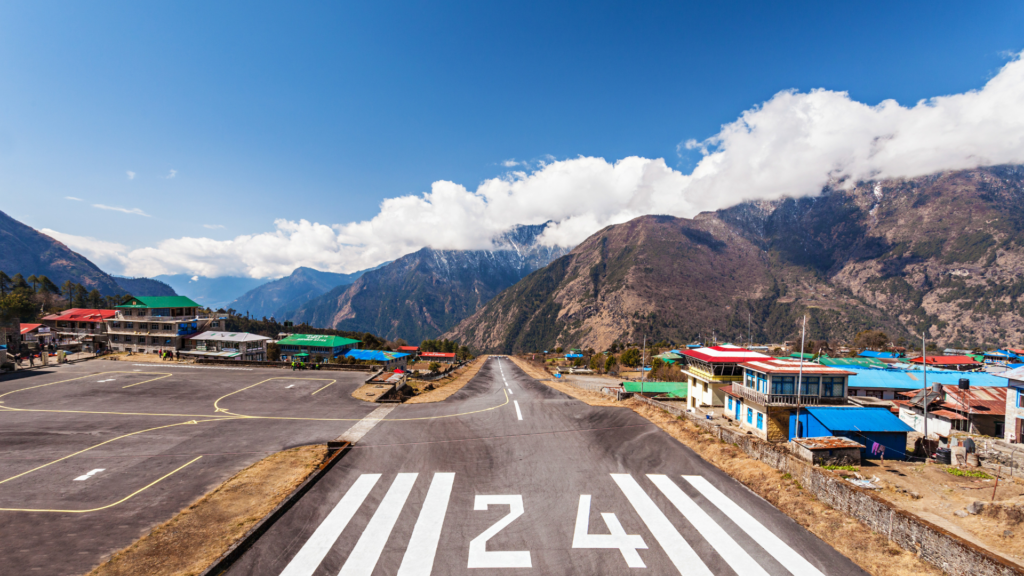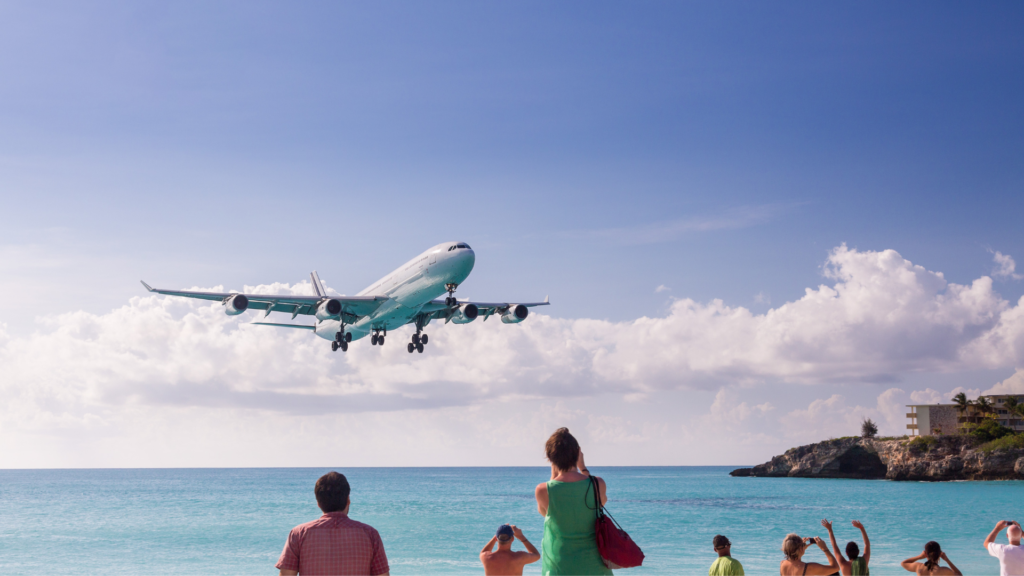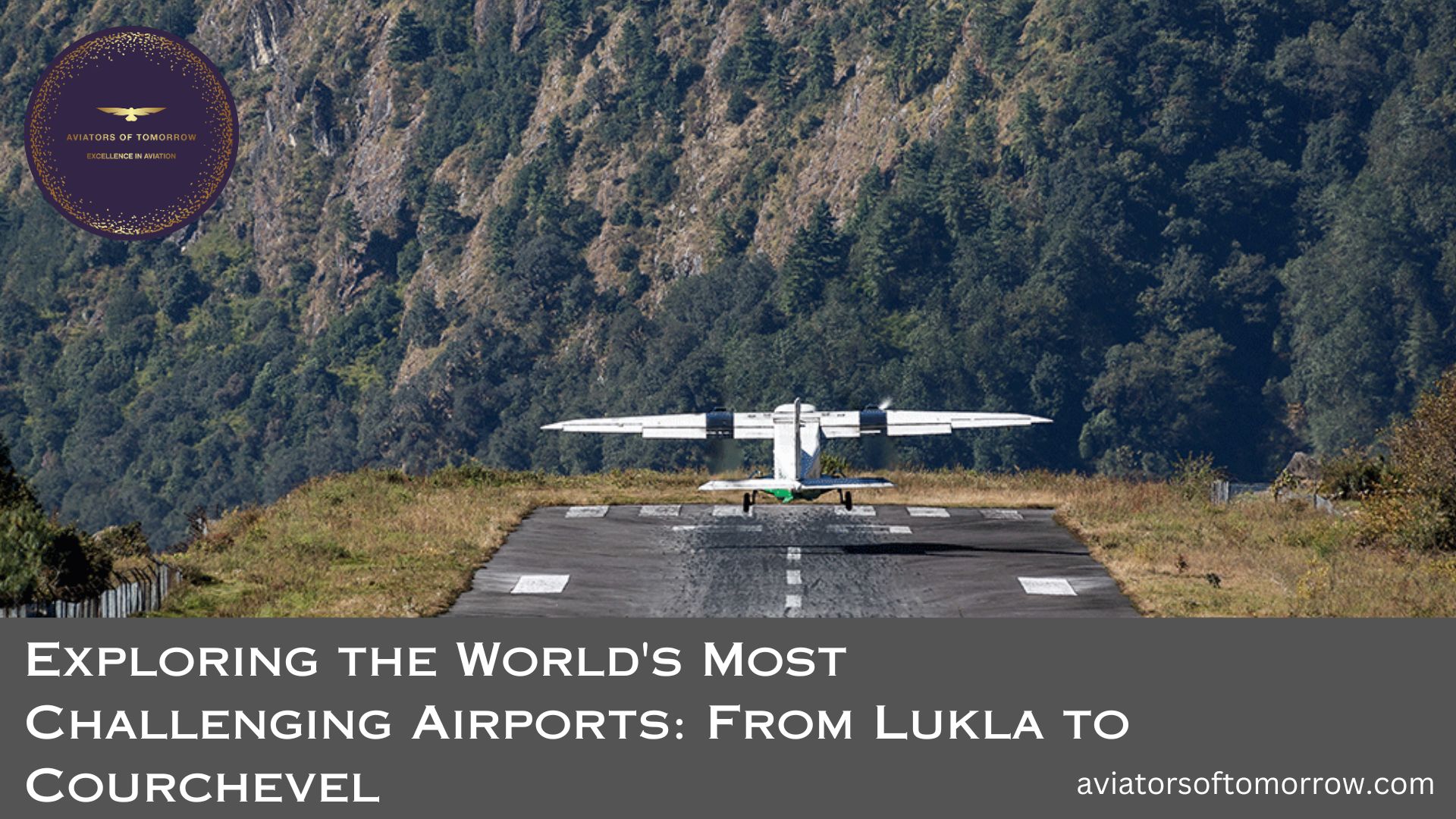Exploring the World’s Most Challenging Airports: From Lukla to Courchevel
Air travel has opened up opportunities to explore the world’s farthest corners, but not all airports are created equal. Some airports present unique challenges due to their location, runway characteristics, or surrounding terrain. In this blog, we will embark on an exhilarating journey to explore some of the world’s most challenging airports, from the iconic Lukla Airport in Nepal to the breathtaking Courchevel Altiport in France. Join us as we delve into the fascinating world of aviation and discover the skills and bravery required to conquer these extraordinary airports.
Table of Contents
ToggleLukla Airport, Nepal

Lukla Airport is the starting point for Everest treks. This airport is notorious for its precarious location and demanding approach. Perched at an altitude of 9,334 feet (2,845 meters), Lukla Airport presents pilots with unpredictable weather conditions, treacherous terrain, and a short runway. The 1,729 feet (527 meters) long runway is situated on a slope and ends with a steep drop into a valley, leaving little room for error. Pilots need exceptional skill and precision to navigate the challenging winds and execute a safe landing on this challenging airstrip.
Princess Juliana International Airport, St. Maarten

Princess Juliana International Airport on the Caribbean island of St. Maarten is renowned for its unique and thrilling aviation experience. The airport’s runway is situated in close proximity to Maho Beach, creating an awe-inspiring spectacle for both beachgoers and aviation enthusiasts. As planes approach the runway, they pass just above the heads of sunbathers, creating a truly unforgettable sight. Pilots must contend with strong crosswinds and the close proximity of beachgoers, necessitating precise calculations and skillful landings. The challenges of Princess Juliana International Airport make it a popular destination for plane spotters and photographers from around the world.
Courchevel Altiport, France

Nestled in the heart of the French Alps, Courchevel Altiport presents pilots with an extraordinary challenge. This airport boasts a runway with a steep gradient of 18.5%, making it one of the steepest in the world. The short runway, measuring only 537 meters (1,762 feet) in length, adds to the difficulty. Pilots require specialized training and skills to navigate the steep approach, execute a precise landing, and manage the high altitude conditions. The unique topography of Courchevel Altiport attracts skilled pilots seeking a thrilling adventure amidst the breathtaking alpine scenery.
Paro Airport, Bhutan

Nestled in the picturesque Paro Valley of Bhutan, Paro Airport offers one of the world’s most spectacular approaches. Surrounded by towering mountains, pilots must navigate through narrow valleys, ensuring precise control and maneuvering. The challenging approach path demands the utmost concentration and expertise to negotiate variable wind conditions and execute a safe landing on the relatively short runway. Paro Airport’s breathtaking setting and demanding approach make it an unforgettable experience for both pilots and passengers alike.
Toncontín International Airport, Honduras

Toncontín International Airport in Honduras has gained a reputation for its challenging approach, often considered one of the most dangerous in the world. Located in a mountainous region, the airport’s short runway and proximity to mountains present significant challenges to pilots. Unpredictable weather conditions further complicate the approach, demanding precise control, swift decision-making, and quick reactions. Pilots must possess exceptional skills and experience to ensure safe landings and takeoffs at Toncontín International Airport.
Read About:- Flying High: How to Make Aviation Your Career
Conclusion
Exploring the world’s most challenging airports provides us with a captivating glimpse into the remarkable skills and bravery of pilots. From Lukla’s treacherous landing to Courchevel’s steep gradient, each airport presents its unique set of difficulties. As travellers, we appreciate the dedication and expertise of pilots who navigate these challenging conditions to ensure our safe and memorable journeys. Let us admire the incredible feats accomplished by these skilled aviators and the vital role they play in connecting the world, even in the face of daunting challenges.
Here are some FAQs related to exploring the world's most challenging airports:
Challenging airports can have various factors that make them difficult for pilots to navigate. These factors may include short runways, steep gradients, unpredictable weather conditions, challenging terrain, or close proximity to obstacles.
Lukla Airport is located at a high altitude in the Himalayas, surrounded by mountains. It has a short runway with a steep incline, unpredictable weather, and limited room for error during landing due to the runway ending with a steep drop into a valley.
The runway of Princess Juliana International Airport in St. Maarten is situated very close to Maho Beach. Planes pass just above sunbathers, creating a thrilling experience for beachgoers. It requires precise calculations and skillful landings to ensure safety.
Courchevel Altiport stands out due to its steep runway gradient of 18.5% and its short length. It is located in the French Alps, offering a challenging approach and requiring specialized training for pilots.
Paro Airport is surrounded by towering mountains, making the approach challenging. Pilots must navigate through narrow valleys, deal with variable wind conditions, and execute a precise landing on the relatively short runway.
Author







